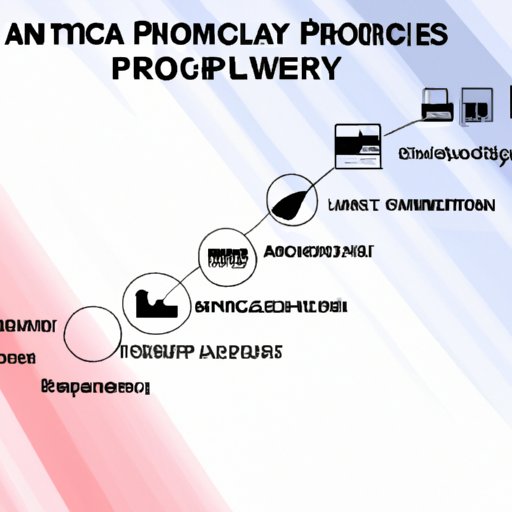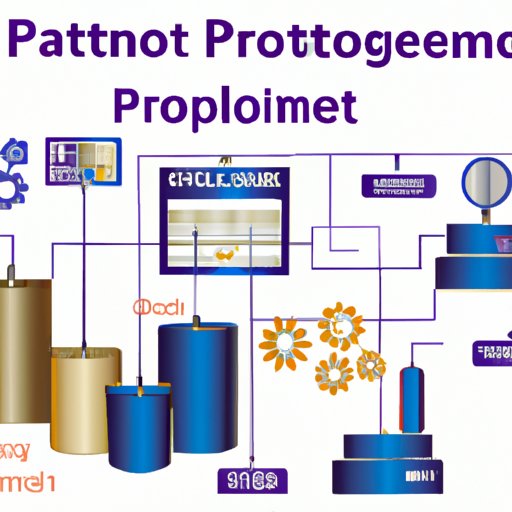
Introducing Process Analytical Technology: Benefits and Applications
Process Analytical Technology (PAT) is an advanced system used to measure, analyze, control, and optimize pharmaceutical production processes. It is a valuable tool for improving product quality and increasing manufacturing efficiency. In this article, we will explore the definition, benefits, and applications of PAT.
Definition of Process Analytical Technology
According to the U.S. Food and Drug Administration (FDA), Process Analytical Technology (PAT) is “a system for designing, analyzing, and controlling manufacturing through timely measurements (i.e., during processing) of critical quality and performance attributes of raw and in-process materials and processes with the goal of ensuring final product quality.”
Benefits of Process Analytical Technology
The use of PAT has numerous benefits, including improved safety, increased efficiency, and reduced costs. For example, PAT helps manufacturers identify potential problems in production processes before they become major issues, which can lead to fewer recalls. Additionally, PAT can be used to optimize production processes, leading to higher yields and faster throughput times.
Applications of Process Analytical Technology
PAT can be applied to a variety of industries and products. It is commonly used in the pharmaceutical industry to monitor and control drug production processes. PAT is also used in the food and beverage industry, as well as other industries that require precise measurements and controls. The use of PAT can help ensure the quality and safety of products, leading to better outcomes.
Exploring the Role of Process Analytical Technology in Quality Assurance
Quality assurance (QA) is a key component of any successful manufacturing process. QA involves evaluating the quality of products or services to ensure they meet customer requirements. PAT can play a vital role in QA by providing real-time data about process performance and product quality.
Overview of Quality Assurance
Quality assurance is the process of verifying that products or services meet certain standards. It includes activities such as testing, inspection, and auditing. Quality assurance ensures that products and services are safe, reliable, and meet customer expectations. Without QA, there is no way to guarantee the quality of products or services.
Role of Process Analytical Technology in Quality Assurance
PAT plays an important role in quality assurance. By providing real-time data about process performance and product quality, PAT can help manufacturers identify potential problems before they become major issues. This allows manufacturers to take corrective action quickly and reduce the risk of recalls. Additionally, PAT can be used to optimize production processes, leading to higher yields and faster throughput times.

Understanding the Principles of Process Analytical Technology
In order to effectively use PAT, it is important to understand the principles behind it. These principles provide guidance on how to design, implement, and maintain PAT systems.
Overview of Principles of Process Analytical Technology
The principles of PAT include: continuous improvement, process understanding, process control, and quality assurance. Each of these principles provides guidelines on how to design, implement, and maintain PAT systems.
Examples of Principles of Process Analytical Technology
Continuous improvement: PAT systems should be designed to continuously improve the process and product quality. This can be achieved through the use of feedback loops and real-time data analysis.
Process understanding: PAT systems should be designed to provide a deep understanding of the manufacturing process and its components. This can be achieved by collecting data from all stages of the process and using it to create models of the process.
Process control: PAT systems should be designed to detect and correct process deviations in real time. This can be achieved by setting up alarm limits and taking corrective action when needed.
Quality assurance: PAT systems should be designed to ensure product quality and safety. This can be achieved by monitoring the process and taking corrective action when necessary.
Examining the Components of Process Analytical Technology
PAT systems consist of several components, each of which plays an important role in the overall system.
Overview of Components of Process Analytical Technology
The components of PAT systems include sensors, controllers, software, and hardware. Sensors are used to collect data from the process. Controllers are used to analyze the data and make decisions based on the results. Software is used to store and manage the data. Hardware is used to connect the different components of the system.
Examples of Components of Process Analytical Technology
Sensors: Sensors are used to collect data from the process. Examples of sensors include pH meters, thermometers, and pressure gauges.
Controllers: Controllers are used to analyze the data and make decisions based on the results. Examples of controllers include PID controllers and fuzzy logic controllers.
Software: Software is used to store and manage the data. Examples of software include data acquisition systems and statistical process control software.
Hardware: Hardware is used to connect the different components of the system. Examples of hardware include cables, wires, and networking equipment.

Using Process Analytical Technology to Improve Manufacturing Efficiency
PAT can be used to improve the efficiency of manufacturing processes. This can lead to higher yields, faster throughput times, and lower costs.
Overview of How Process Analytical Technology Can Improve Manufacturing Efficiency
PAT can be used to identify areas of improvement in manufacturing processes. By collecting real-time data and analyzing it, manufacturers can identify bottlenecks, optimize production parameters, and reduce waste. This can lead to higher yields and faster throughput times, resulting in increased efficiency and cost savings.
Examples of How Process Analytical Technology Can Improve Manufacturing Efficiency
Real-time data collection: PAT can be used to collect data in real time. This data can be used to identify bottlenecks and other areas of improvement.
Optimization of production parameters: The data collected by PAT can be used to optimize production parameters. This can lead to higher yields and faster throughput times.
Reduction of waste: PAT can be used to identify sources of waste and take corrective action. This can lead to significant cost savings.
Conclusion
Process Analytical Technology (PAT) is an advanced system used to measure, analyze, control, and optimize pharmaceutical production processes. It is a valuable tool for improving product quality and increasing manufacturing efficiency. In this article, we explored the definition, benefits, applications, principles, components, and how PAT can be used to improve manufacturing efficiency.
(Note: Is this article not meeting your expectations? Do you have knowledge or insights to share? Unlock new opportunities and expand your reach by joining our authors team. Click Registration to join us and share your expertise with our readers.)
